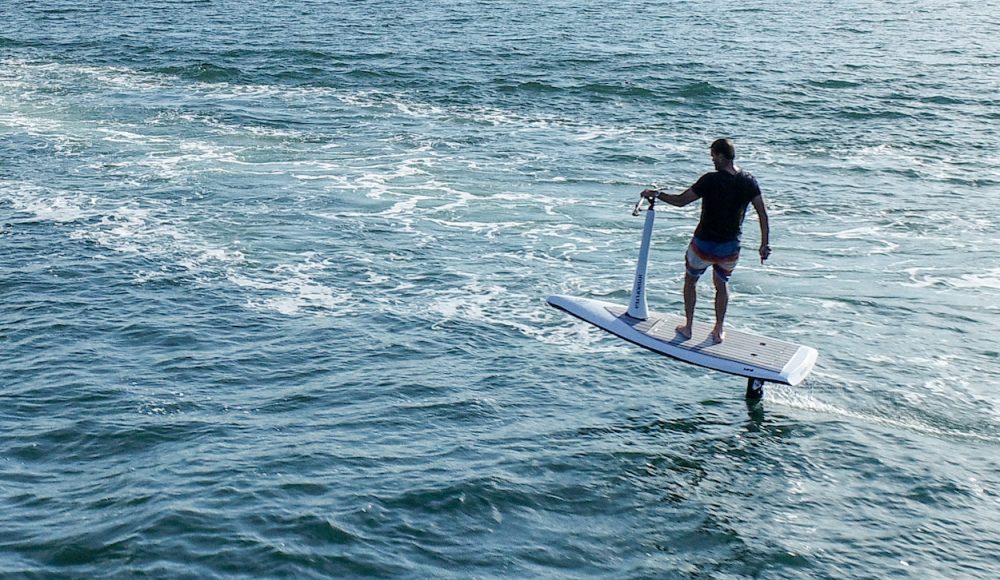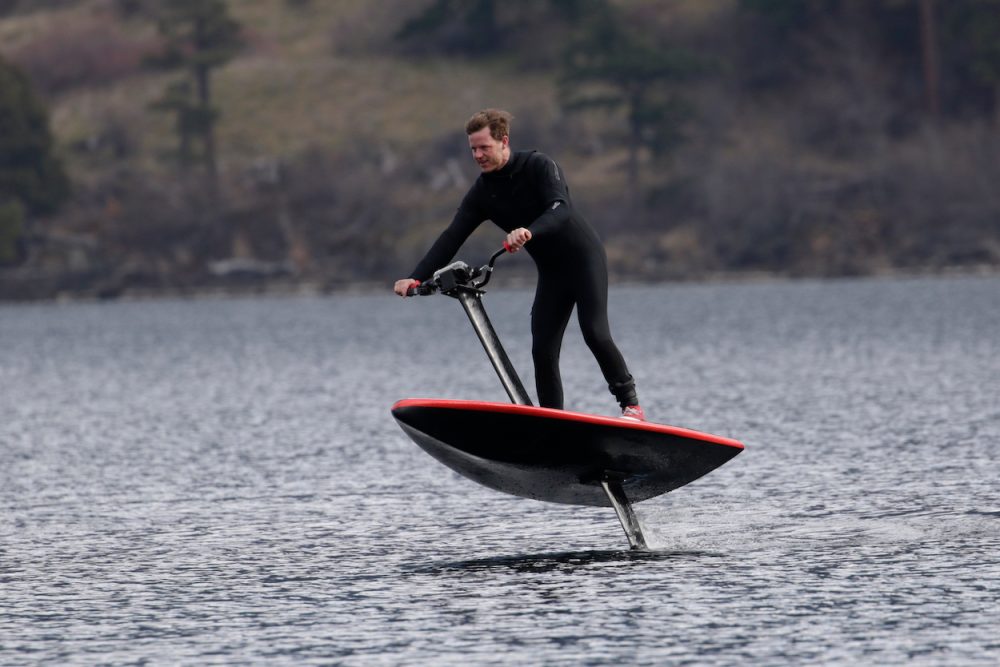
Meet the HydroFlyer – an electric personal watercraft that seems to combine aspects of hydrofoil boards, surfboards, and jet skis into the most unique water toy I’ve seen in a long time.
The brainchild of Canadian inventor Jerry McArthur and produced in partnership with leading hydrofoil manufacturer Unifoil, the HydroFlyer appears to evade a clear definition.
On the surface it looks like a typical electric surfboard, except that it has a stem and set of handlebars jutting out of the bow.
Beneath the surface is a hydrofoil that also houses the electric motor and propeller.
With its electric drive it requires no fuel and creates no noise, enabling silent and pollution-free cruising on or above the water.
At slower speeds it rides on the surface, while faster speeds cause the hydrofoil to lift the board out of the water, giving the rider the sensation of flying.
I’ve tested a less-evolved version of an electric hydrofoil board before, and I can attest that the experience really does feel like you’re flying – right up until your (i.e., my) inexperience sends you ragdolling into the surface of the water. See the video below to get a sense of it.
In the case of the HydroFlyer, the added handlebars are supposed to help the board feel more stable and prevent riders from doing as many water faceplants as I did on my first electric hydrofoil board experience.
As McArthur explained:
I became obsessed with e-foiling several years ago, but I was hesitant to teach my friends and family after seeing some of the horrific accidents watching other people learn. I wanted to find a way to make eFoiling safer and more accessible to everyone, without taking away the feeling of speed and excitement of flying over water.
My background of riding dirt bikes and snowmobiles led me to adding handlebars. Adding four points of contact makes eFoiling easier to learn and balance. This enables a safer learning curve, more control, and a faster ride. This design of the HydroFlyer is easier to learn for beginners, while also allowing advanced riders to perform more extreme maneuvers. There’s only upside to this improved layout.
With a top speed of 55 km/h (34 mph), riders are sure to appreciate every extra bit of stability they can get.
The company claims it only takes 15 minutes to learn to ride. If true, then the two-hour battery means you’ll have most of your first charge left to enjoy riding around on the novel device.
You can see the board in action below, where it seems to be much easier to ride than my own first experience on a typical electric hydrofoil board.
If you’re at all familiar with the electric surfboard industry, then you’re already prepared for the price.
If don’t count yourself in that group, then buckle up – $13,999.
That’s what it will cost you to fly through the air, a few feet above the water, on your own electric HydroFlyer board. You can learn more over at HydroFlyer’s site.
It’s a pretty cool invention, but I think my wallet will be happier with me if I stick to body surfing for now.
Subscribe to Electrek on YouTube for exclusive videos and subscribe to the podcast.
Author: Micah Toll
Source: Electrek






